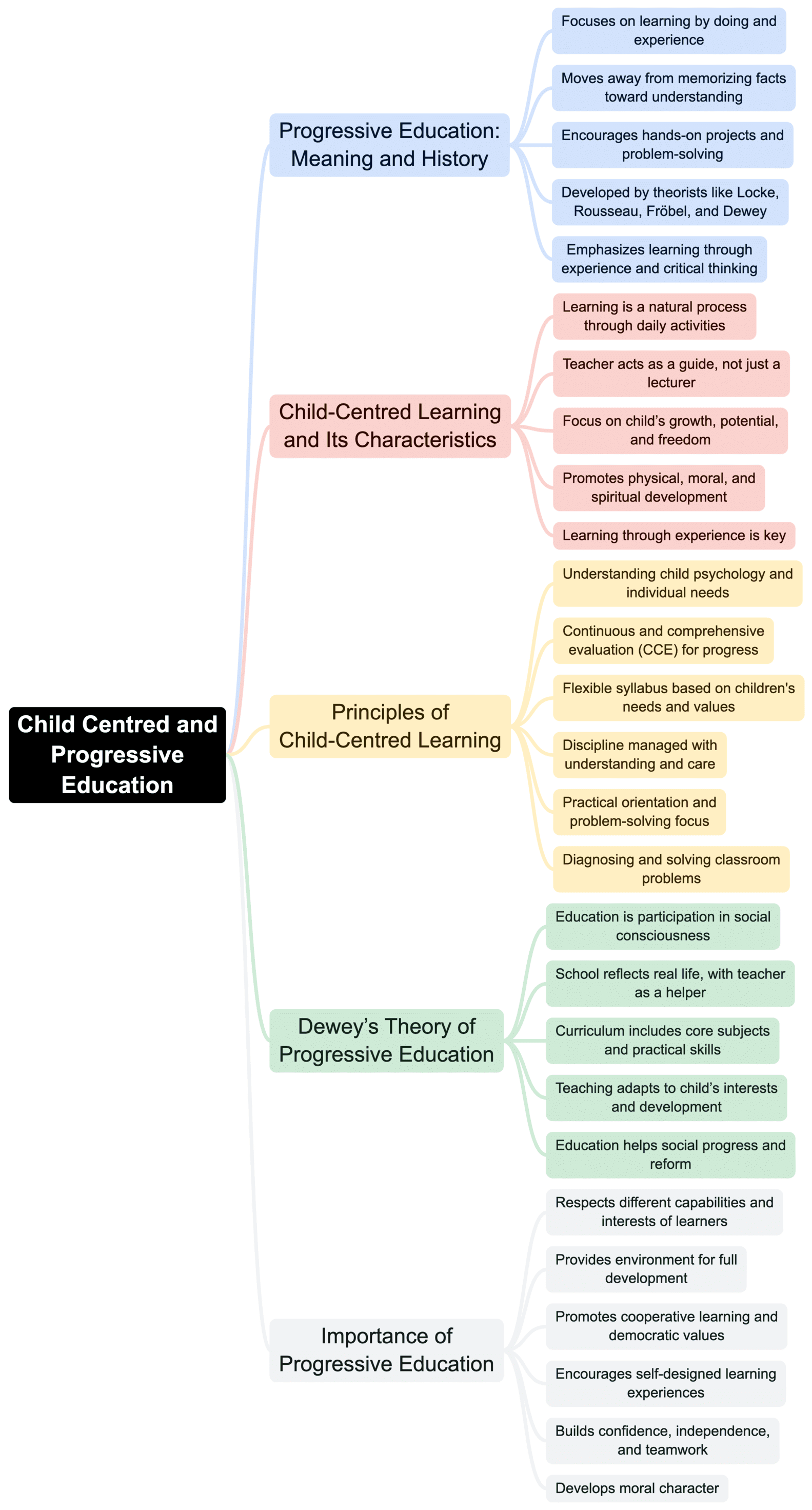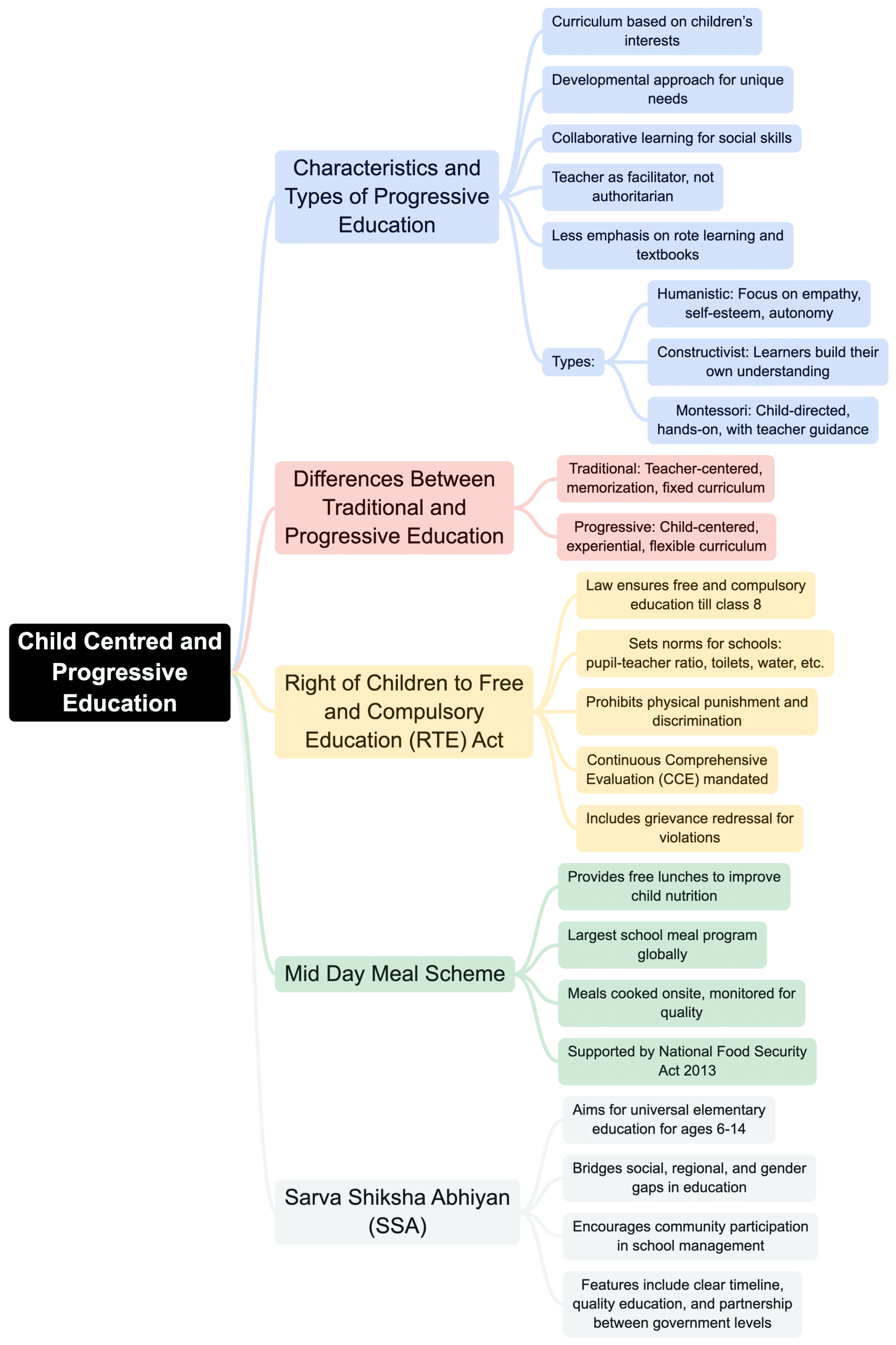CTET & State TET Exam > CTET & State TET Notes > Child Development and Pedagogy for CTET Preparation > Mind Map: Concepts of Child Centered and Progressive Education
Mind Map: Concepts of Child Centered and Progressive Education | Child Development and Pedagogy for CTET Preparation - CTET & State TET PDF Download


The document Mind Map: Concepts of Child Centered and Progressive Education | Child Development and Pedagogy for CTET Preparation - CTET & State TET is a part of the CTET & State TET Course Child Development and Pedagogy for CTET Preparation.
All you need of CTET & State TET at this link: CTET & State TET
|
67 videos|154 docs|41 tests
|
FAQs on Mind Map: Concepts of Child Centered and Progressive Education - Child Development and Pedagogy for CTET Preparation - CTET & State TET
| 1. What is the main idea behind Child-Centered Education? |  |
Ans.Child-Centered Education focuses on the interests, needs, and learning styles of the child. It promotes active engagement, allowing students to take charge of their own learning. This approach emphasizes experiential learning and encourages critical thinking, creativity, and collaboration among students.
| 2. How does Progressive Education differ from traditional education methods? |  |
Ans.Progressive Education is characterized by its emphasis on experiential learning, social reform, and democratic principles in the classroom. Unlike traditional methods that often focus on rote memorization and standardized testing, Progressive Education promotes inquiry-based learning, where students learn through exploration and problem-solving, fostering a love for learning rather than merely preparing for exams.
| 3. What are some key principles of Child-Centered and Progressive Education? |  |
Ans.Key principles include focusing on the whole child, fostering a supportive and inclusive environment, encouraging student choice and voice, integrating subjects for holistic learning, and emphasizing social and emotional development alongside academic growth. Both approaches value the learner's experience and strive to make education relevant to their lives.
| 4. How can teachers implement Child-Centered and Progressive Education in their classrooms? |  |
Ans.Teachers can implement these educational philosophies by incorporating project-based learning, facilitating group discussions, allowing for flexible classroom layouts, and providing opportunities for self-directed learning. They should also engage students in setting learning goals and encourage reflection on their learning processes.
| 5. What are the benefits of Child-Centered and Progressive Education for students? |  |
Ans.Students benefit from increased motivation and engagement in learning, improved critical thinking skills, enhanced collaboration and communication abilities, and a greater sense of responsibility for their own education. These approaches also help develop social skills and emotional intelligence, preparing students for real-world challenges.
Related Searches





















